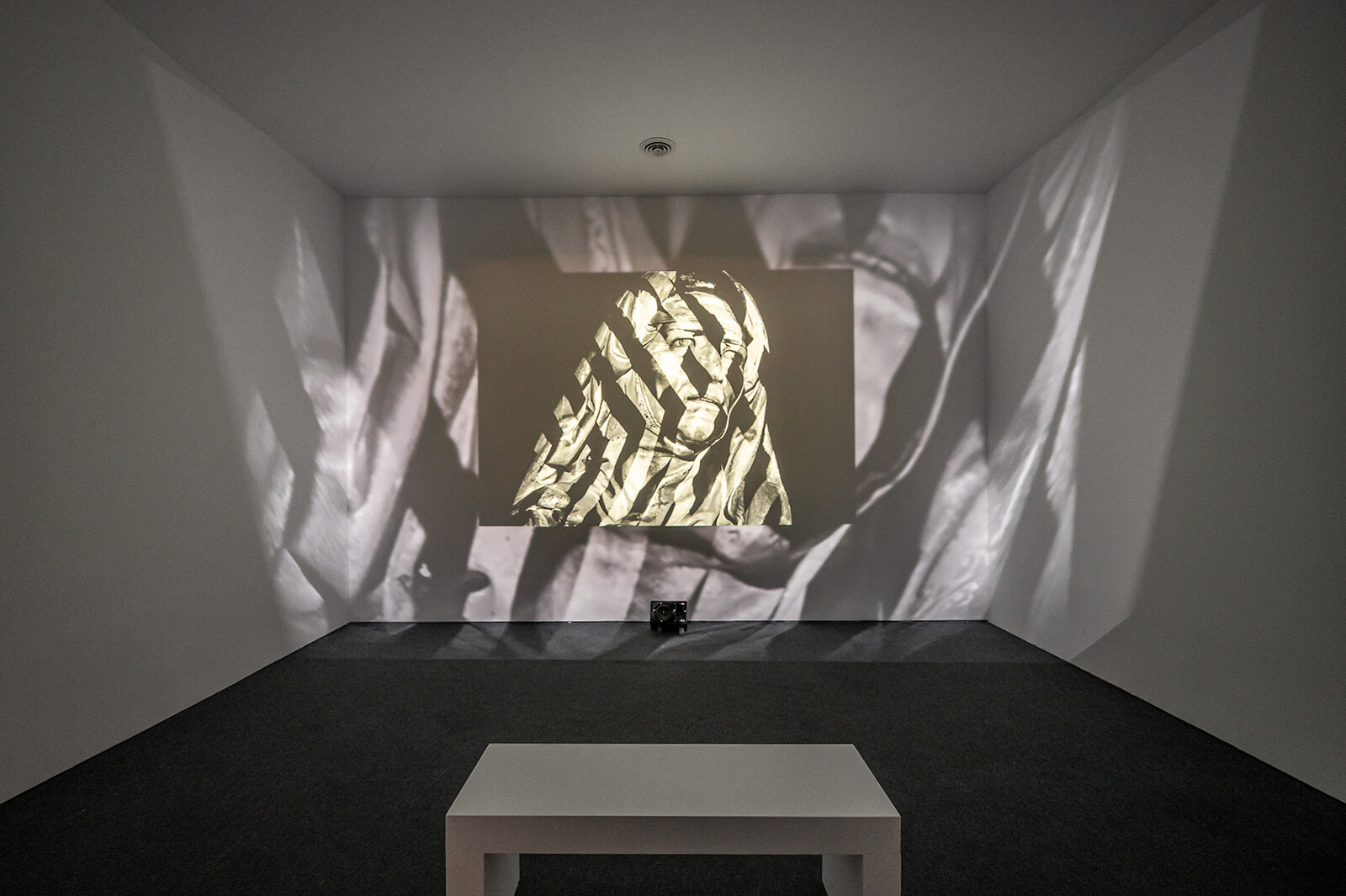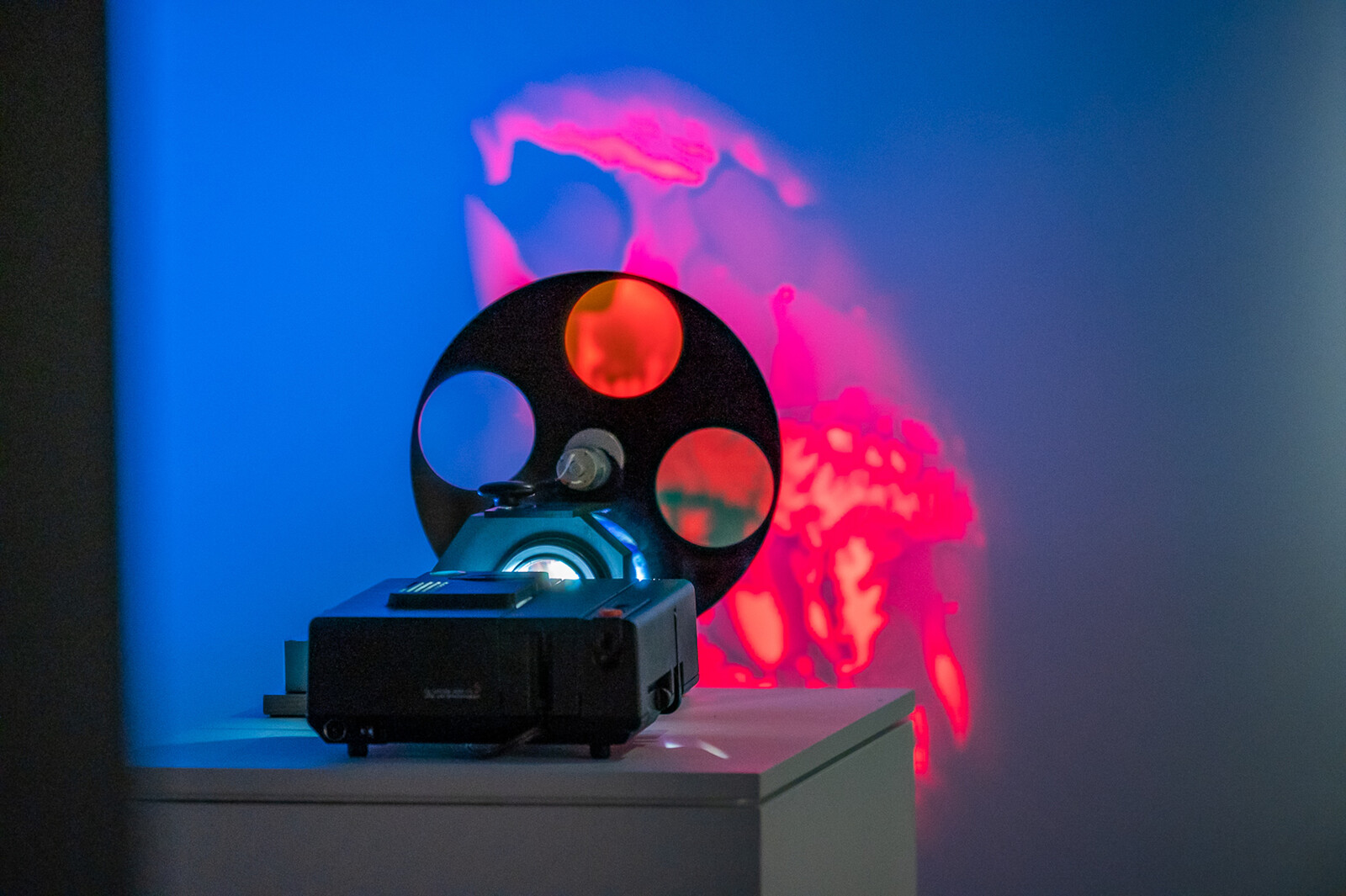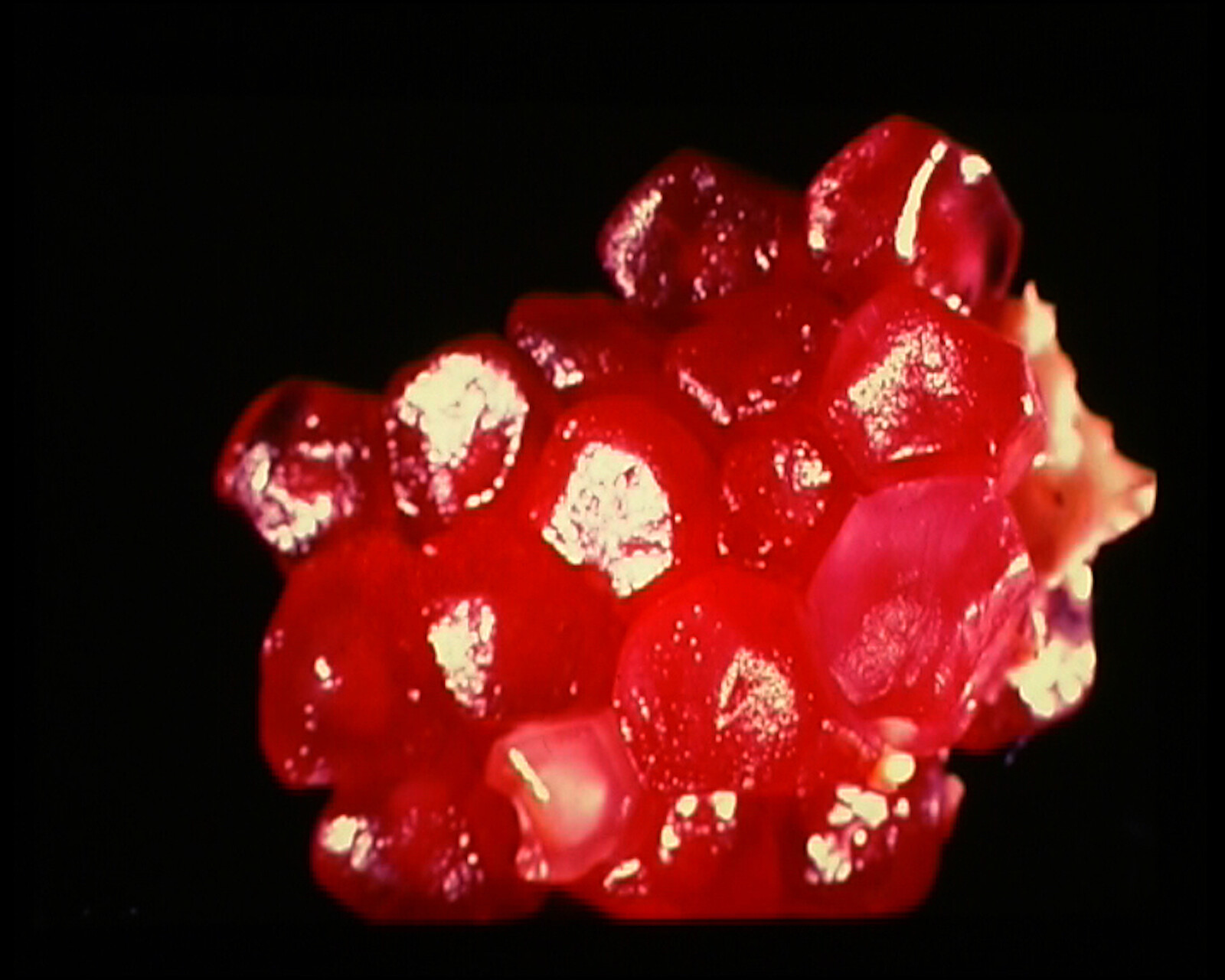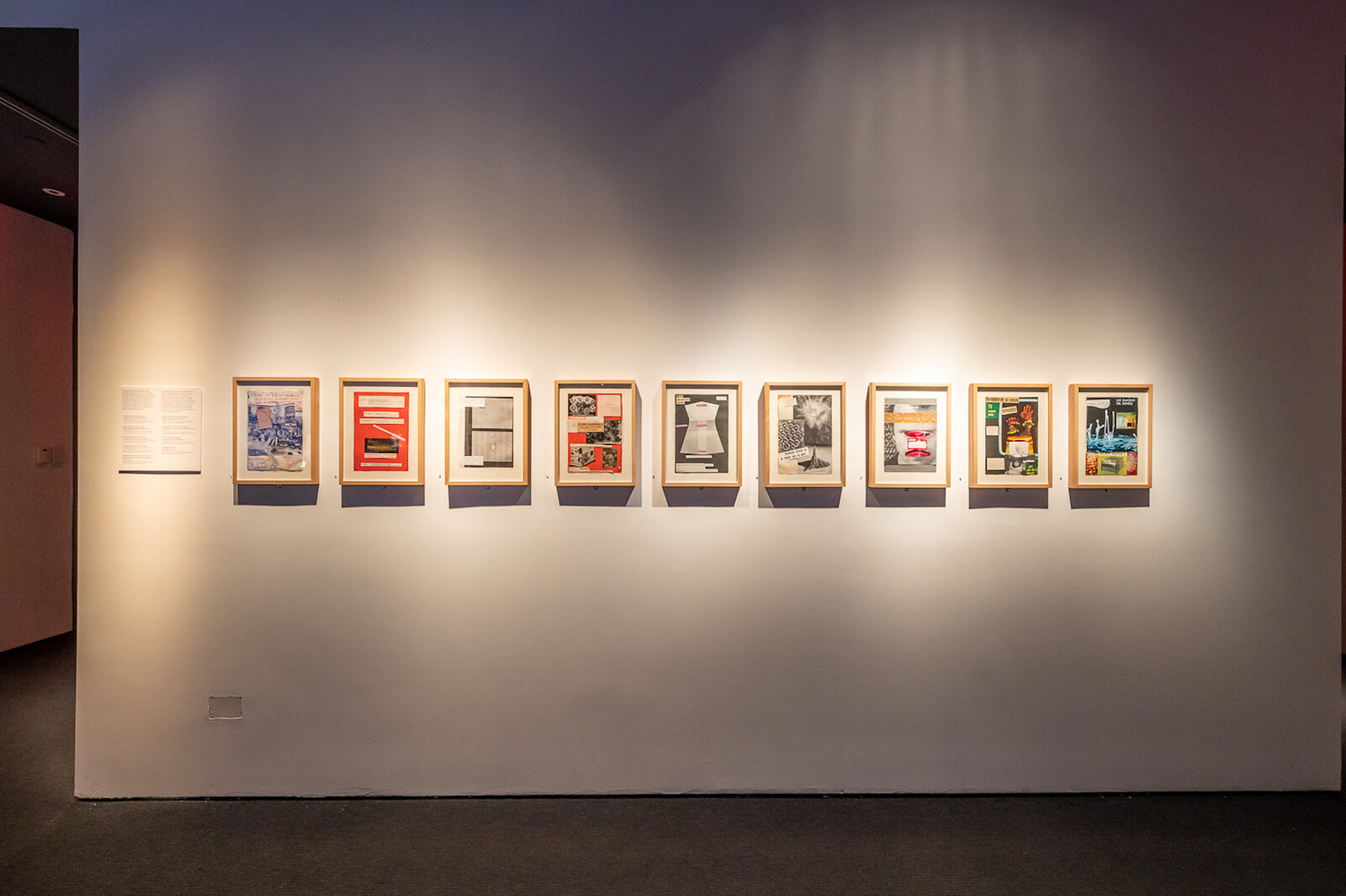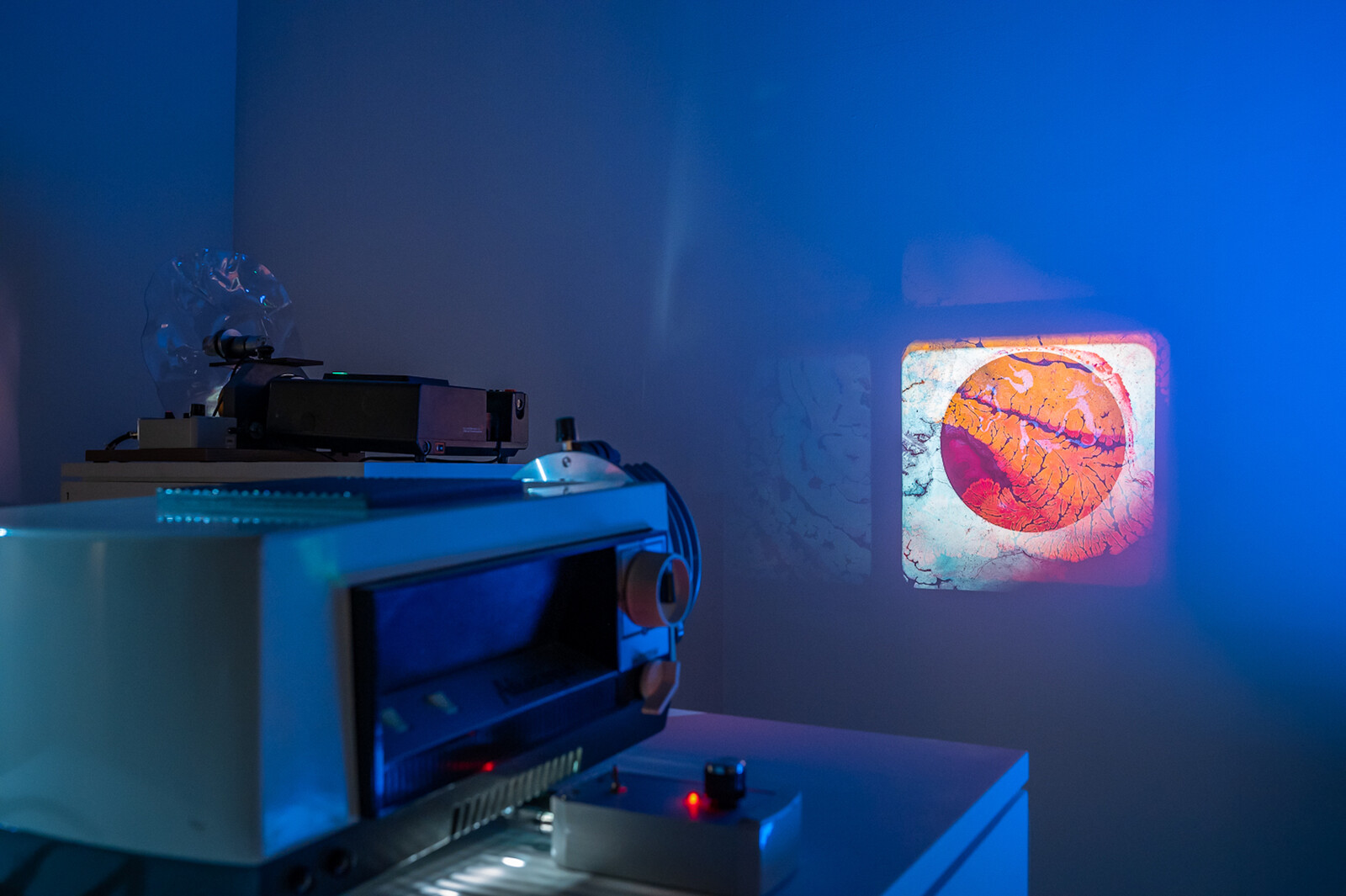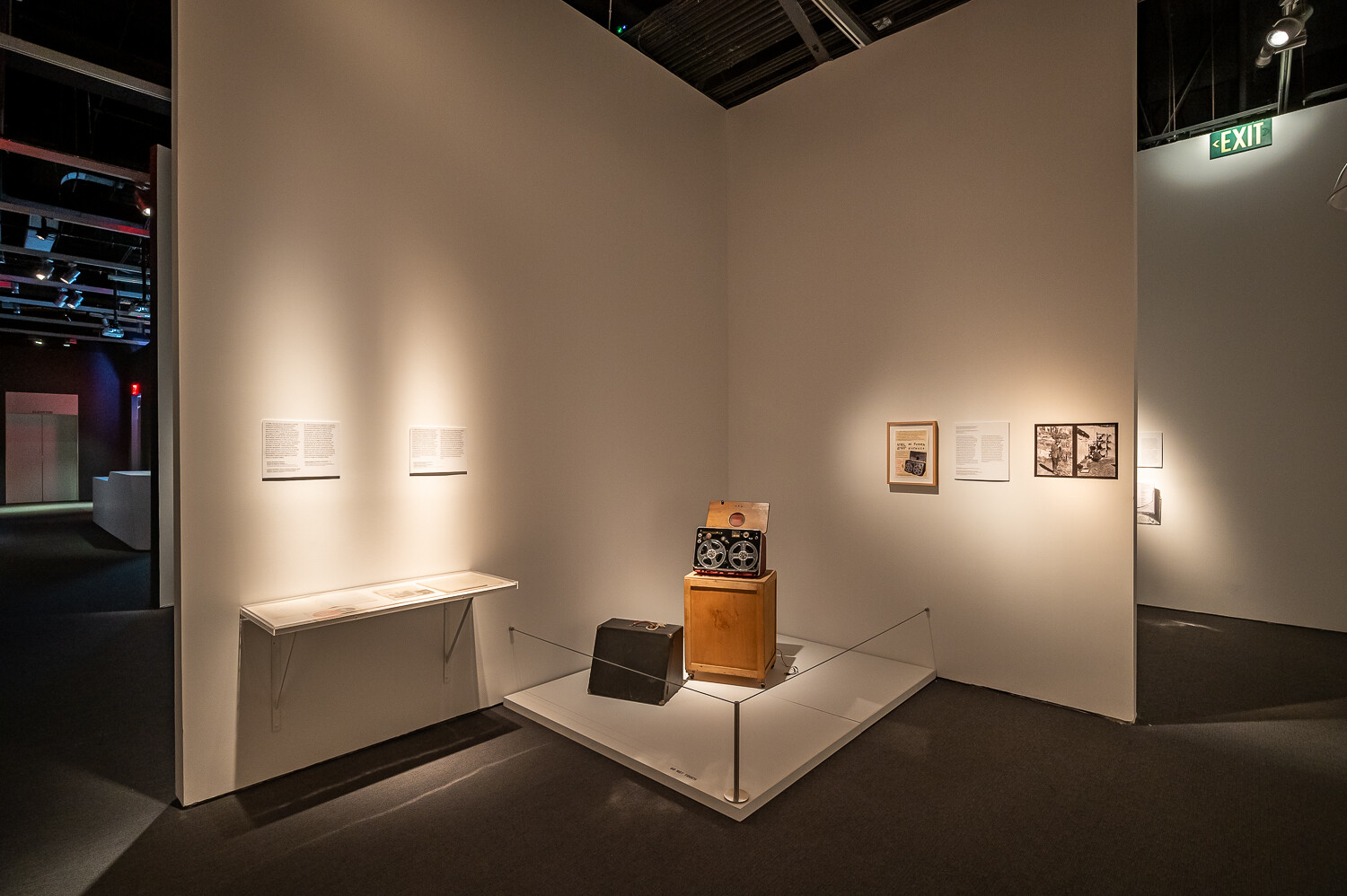A quick survey of a handful of my peers—among them several experimental filmmakers, curators, and academics—revealed that none of them recognized the name José Val del Omar (1904–82). This came as a surprise to me, given that Val del Omar is perhaps the most foundational filmmaker of Spanish avant-garde cinema.1 My peers’ responses were ample if anecdotal evidence that the Museum of the Moving Image’s “Cinema of Sensations: The Never-Ending Screen of Val del Omar” is not only much needed; it should also provide an eye-opening look at the work of a visionary artist who is too little-known outside his home country—even to those who are invested in the subject of experimental film.
“Cinema of Sensations,” in the museum’s temporary exhibition gallery, demonstrates that Val del Omar was not just a filmmaker but a technician and inventor, cultural critic and theorist, and a trailblazing artist whose work and ideas spilled across many forms and media. This chronological exhibition opens with Val del Omar’s first films, made in rural towns that he visited during the early 1930s as part of the Misiones Pedagógicas (Pedagogical Missions) literacy campaign. It closes with the techno-futuristic experiments developed at his P.L.A.T. lab, a live-in studio space in Madrid, during the 1980s: experiments with three-dimensionality, flickering light, and laser-generated imagery. Dotted throughout the museum’s permanent collection are new moving-image installations by Dúo Prismáticas, Esperanza Collado, and Colectivo Los Ingrávidos that respond to the ideas of Val del Omar in the present, alongside a collaborative VR work by Sally Golding, Matt Spendlove, and Tim Cowlishaw.
At each stage, this diligently researched exhibition—curated by Almudena Escobar López in collaboration with the Val del Omar Archive, Museo Reina Sofía, and Max Estrella Gallery—elucidates the artist’s motivations, ambitions, and theoretical underpinnings. It was during his work with the Misiones Pedagógicas that Val del Omar developed his ideas around sensory experience and cinema as a tool for perception: “I can tell you that in pure cinematographic projections, the curtain disappears, the viewer’s retina disappears, only our psychic screen remains, absorbing the light rays as if it were the surface of a deep lake, on which a dream is projected and in which instinct is recognized.”2 He would continue to develop and deepen his sensory approach to cinema as “the means of anti-intellectual, instinctive communication” throughout his life. This included his work building sound recording and diffusion devices—such as the first-ever four-track tape recorder and an early precursor to surround sound, both in the 1940s—and psychedelic image-beaming devices made out of rotating lenses and modified slide projectors. His late-career P.L.A.T. invention the truca—a “visual mixing table” that combined many of these technologies to produce abstract images—dominated his final years.
The apotheosis of Val del Omar’s artistic achievements is his Tríptico elemental de España (Elementary Triptych of Spain, 1955–95). In these three film-poems, each around 20 minutes long, he put his sonic and cinematographic theories to the test. Displaying this project across three separate gallery spaces allows the ambitious scope and grandeur of its movements to be appreciated. The triptych traces a journey across the Iberian Peninsula, from the posthumously completed Galician Caress (of Clay) (1961–95) in the Galician northwest, to the inland Valladolid in Castilla y León (Fuego en Castilla, 1960), and finally to the capital city of Granada in the southern province of Andalusia (Water-Mirror of Granada, 1955). (Val del Omar preferred the three films to be exhibited in reverse-chronological order.)
These “elemental” films take as their subjects earth, fire, and water respectively. Their intricacies and contexts cannot properly be elucidated within the short space of this review, yet it would be hard to overstate their impact on the viewer. Keenly installed according to Val del Omar’s theories of TactilVisión, the image of the last two films is at times punctuated with a second, much larger projection that magnifies and expands the screen beyond its normal borders. He called this technique desbordamiento apanorámico (“apanoramic overflow”): images that spill across the walls, ceiling, and even onto the viewers themselves. His sonido diafónico (diaphonic sound), meanwhile, employed a two-channel speaker configuration which is oriented both in front of and behind the viewer. Its aim was to activate the subconscious through a discordant combination of narration and “subjective” sounds—music, ambient noise, natural sounds, and so on.
Val del Omar’s theories may sound simple enough when described. In this carefully installed exhibition, however, they are fully achieved, and their sensitive employment enhances Val del Omar’s films to elegant and powerful effect. Despite the films’ classical feel—his exhibition history is mostly of screenings within cinematic rather than gallery contexts—these works are radical in their form, ambition, and unconventional, sensory involvement of the viewer. Taking in Val del Omar’s boundary-pushing experiments across decades and media, “Cinema of Sensations” showcases an originality and boldness of vision that, one hopes, will see his work embraced more widely by devotees of adventurous cinema and media art.
I’d place Val del Omar above his contemporary Luis Buñuel, who is far better known today—not least as Buñuel’s key films were made in France and are less avant-garde in their approach. I first encountered Val del Omar’s work when Fuego en Castilla (1960) was included as the first film in “Del éxtasis al arrebato. 50 años del otro cine español,” a major survey of Spanish experimental film distributed by CCCB Centre de Cultura Contemporània de Barcelona from 2009 to ’12. This six-program survey was exhibited globally, and at venues such as Anthology Film Archives (New York), the National Gallery of Art (Washington DC), and International House Philadelphia.
José Val del Omar, “Sentimiento de la Pedagogía Kinestética”, 1932. Essay translated and quoted in exhibition text.
